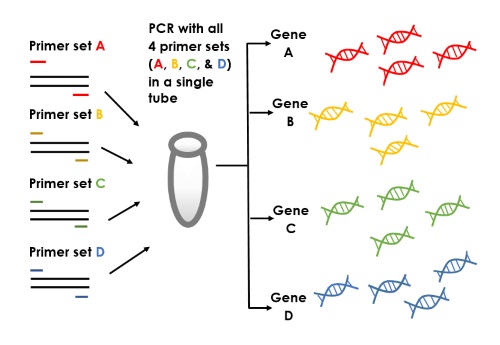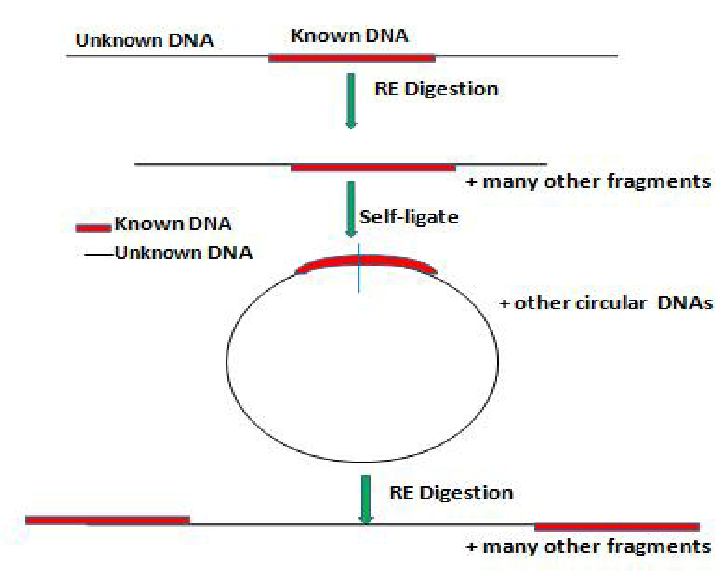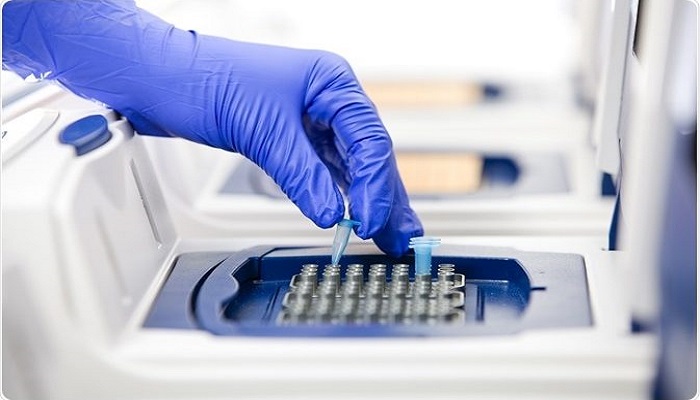Introduction
Polymerase Chain Reaction (PCR) is a biotechnological technique which amplifies a particular sequence of DNA and produces millions of copies of specific gene sequence. Kary Mullis developed this technique in 1938.
The basic principle of this technique is that the DNA replicates itself with the help of polymerase enzyme using its bases and the primer sequence. Most of the PCR reactions can amplify the genetic sequence of 0.1 to 10 kbs and this range can be up to 40 kbs. The repeated replication of one particular sequence of DNA provides millions of its copies that can be used in microbiological and molecular researches and in field of forensic science also.
Basic steps of Polymerase chain reaction (PCR)
The basic steps in all the types of polymerase chain reaction are almost the same. These are:
- Denaturation
- Annealing
- Elongation
These three steps constitute one cycle of replication. This cycle repeats itself for about 35 times to get millions of copy of the initial DNA sequence.
The requirements of this process are:
- Primer sequence to bind to 3’ end of DNA strand from where the replication will start
- Taq polymerase enzyme that adds DNA bases to the growing strand of DNA and can withstand the high temperature of reaction mixture required to unwind DNA
- DNA bases & PCR machine that amplifies the gene number
Types of Polymerase chain reaction
Here are some types of PCR that are based upon their type of genetic sequence they amplify and their specificity as well:
- Reverse Transcribed PCR
- Multiplex PCR
- Touchdown PCR
- Nested and Semi-nested PCR
- Inverse PCR
- Quantitative PCR
1.Reverse Transcribed PCR
This type is based upon the principle of reverse transcription of gene that is amplified. So it is basically used to amplify and identify the genomic sequence of viruses and retroviruses that become incorporated in the host genome.
The enzyme used in this PCR reaction is RNA dependent polymerase obtained from thermus themophillus bacterial species. Depending upon the type of transcriptase enzyme it can amplify genomic sequences ranging from 1-12 kbs.

Anchored PCR
One of modified form is anchored PCR. In this type both the strands of DNA are amplified using two separate poly dT primers for each of them. In this way a small quantity of DNA template can be amplified.
2. Multiplex PCR
This type is useful for simultaneous amplification of multiple sequences within the same sample. It also has applications for identification of exonic and the intronic sequences in DNA strand.

Depending upon the number and the type of primer required in the process, it can be classified as:
- Single Template PCR
If a single strand is to be amplified, primers are added both for forward and reverse transcriptions to amplify a specific region within the same template strand.
- Multiple Templates PCR
As indicated by its name, it can amplify multiple template strands by application of multiple primers but in the same reaction mixture.
3. Touchdown PCR
In this type of PCR reaction, the initial or the annealing temperature is kept higher as compared to the standard temperature and this temperature is lowered systematically in each cycle. Moreover, each cycle is repeated twice and the number of repeating cycles is controlled.
4. Nested PCR
This type is based upon the principle of double amplification that is accomplished using two different sets of primers. The principle is that the amplified product of the first primer is subjected to second amplification cycle that applies second set of primer in a separate tube. This second primer basically amplifies a specific region inside the genomic sequence that was amplified.
But this process has a disadvantage that it causes contamination of sample when transferred to separate tube for second phase of amplification. Maintaining a high annealing temperature in second phase prevents this contamination.
Semi-Nested PCR is similar to the nested type but the difference is that three primers are required to complete the process. Two primers are similar as in nested technique and one separate internal polymerase chain reaction is required before the second amplification cycle. This technique is helpful for the detection and amplification of six different genotypes of some viruses like rabies virus.
5. Inverse PCR
Mainly the polymerase chain reaction needs the identification of the 5’ end of the DNA sequence that is amplified by the enzymes and the primer used in the process. The inverse PCR has the advantage that the enzyme itself can create the known 5’ and 3’ ends of the genetic sequence.
This occurs by using restriction endonuclease enzyme that digests the targeted DNA strand at specific restriction sites. Later, by mean of self-ligation, it creates a circular ring of DNA sequence. Cutting the circle by restriction enzyme develops a strand of DNA that has known sequence at both ends and from where the amplification of DNA sequence is done successfully.

6. Quantitative / Real-Time PCR
This type is useful for approximate quantification of the transcripts being amplified by the PCR process, present within the sample. The copies of DNA or c-DNA are quantified and are controlled by this technique.
After the amplification, the researchers observe the results with the help of some fluorescent dye. Also, they may use some labeled probes for this purpose.
Dyes are actually fluorochromes like SYBR Green that upon attachment to amplified DNA sequences cause fluorescence. If the emitted fluorescence increases, it indicated more copies of the genetic sequence in sample.
Similarly the genetic probes hybridize with the double stranded DNA and create fluorescence that is directly proportional to the number of transcripts or the copies of DNA that are amplified.
In addition to these types, there are many other advanced modifications of PCR techniques and devices as well to enhance the efficiency of this process. Each type has its specificity, efficiency and limitations.
Applications of PCR
Polymerase chain reaction is a wonderful technique of biotechnology for research purposes and many others. A few applications are:
1. Diagnosis of genetic disorders
Genetic disorders are those which occur due to sudden change in structure of genetic material. These diseases pass on to next generations. PCR is helpful tool to find out the chances of genetic disorders. For instance, screening of genetic disorder is done by using the cells form chorionic villus. This is membrane barrier between mother and the baby. The DNA of fetus when amplifies by this technique helps in detailed analysis and identification of gene mutation.
2. Genetic fingerprinting
This is also named as DNA fingerprinting or DNA profiling. The researchers isolate DNA from cells such as blood, hair or semen samples. DNA fingerprinting basically compares and analyze certain stretches of DNA that are unique in every person. This helps the crime investigation agencies to have a record of DNA fingerprints of the criminals. Similarly, mitochondrial DNA fingerprinting is also a technique to identify the blood relations to maternal side of a person because the only the maternal mitochondria passes on to next offspring.
3. Diagnostic tests
PCR can detect various infectious diseases before the serological lab tests. For instance, PCR detects the typhoid fever. Moreover, this is helpful to detect any possible infection in donated blood or a person. Here comes the example of tuberculosis. PCR has its application to find out the compatibility of donor and recipient before the organ transplantation.
4. Personalized medicine
This is a new revolution in medicine and therapeutics that drugs for treatment of disease should design according to his/her genome. Depending on the genome of each person, this medicine will be customized and personalized and so will be its dose.
5. Detection of environmental pathogens
PCR helps in detection of various pathogenic particles not only in body of organism but also outside of it. Therefore, this can help in detection of pathogenic bacteria or viruses in water supplies.
6. A research tool
The most significant role of PCR is in research and analytics. This amplifies the minor amount of DNA which the researchers may insert into other organism’s genome. For instance, in genetic engineering experiments of E.coli genome, Human Genome Project. This helps is studying the gene expression in relation to various factors and environmental conditions.
This technique is also helpful for archaeological studies. The DNA of dead and extinct organisms is obtained from their fossils and bones and is amplified with the help of PCR for further studies and analysis.


V ry nyc and good information.please give me daily basis information
Thanks that you liked our article. stay tuned with science of healthy for more informative articles.
pleasures mine
thankxxxxx alot for giving me such a great info
Perfect Tool to unlock the Central Dogma of Molecular Biology
Great piece
of information